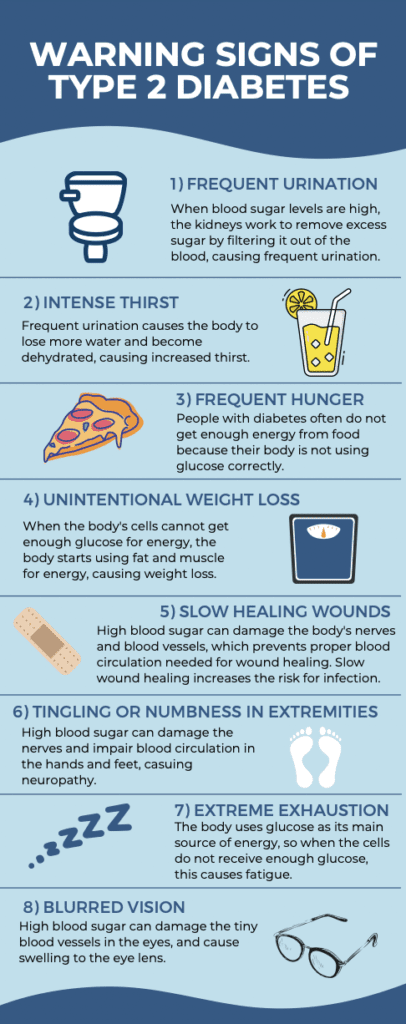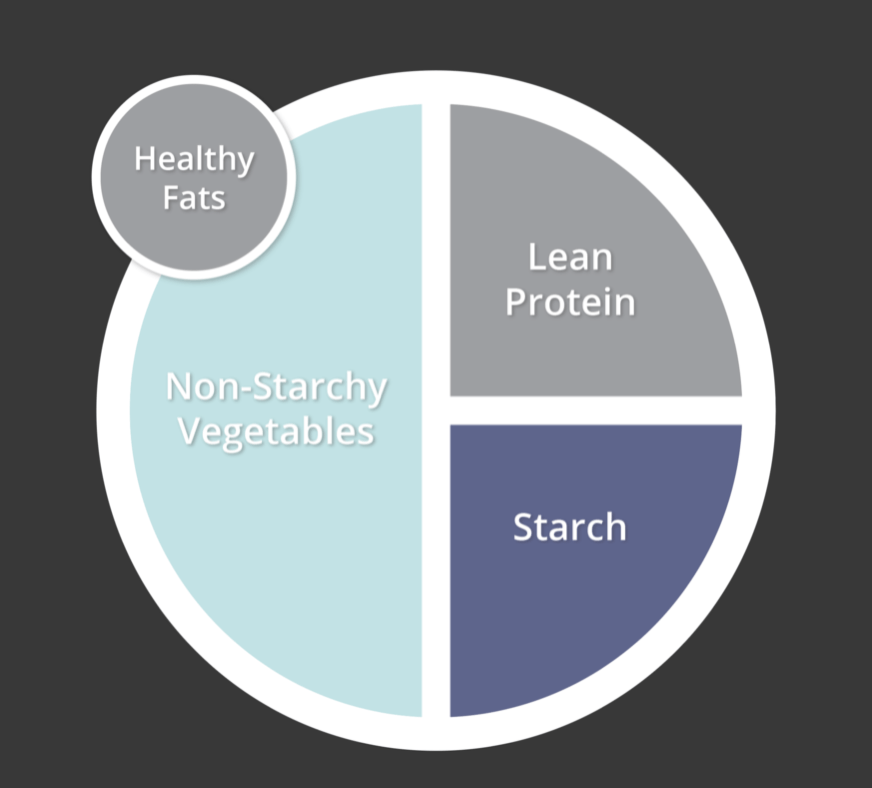Understanding Lab Values and Symptoms for Prediabetes and Type 2 Diabetes
Of those with prediabetes, roughly 84% of this population is unaware because prediabetes is most commonly an asymptomatic condition. It’s important to understand diabetes lab values and symptoms.
What is Prediabetes?
Prediabetes means you have a higher than average blood sugar level. You may have had a high fasting blood sugar or A1c on your last lab results. It’s not quite high enough to be considered type 2 diabetes, but without making nutrition and exercise changes, adults and children with prediabetes have a higher risk of developing type 2 diabetes.
What is Type 2 Diabetes?
Type 2 diabetes is an impairment in the way the body regulates and uses sugar or glucose as a fuel. Your pancreas does not produce enough insulin which is a hormone that regulates the movement of sugar into your cells and your cells do not respond properly for metabolism. This long-term condition results in too much sugar circulating in the bloodstream. Eventually, high blood sugar levels can lead to disorders of the circulatory, nervous and immune systems.
Blood Sugar Values for Prediabetes and Diabetes
Fasting Blood Sugar
This measures your blood sugar after an overnight fast (not eating). A fasting blood sugar level of 99 mg/dL or lower is normal, 100 to 125 mg/dL indicates you have prediabetes, and 126 mg/dL or higher indicates you have diabetes.
Post Prandial Blood Sugar
Postprandial means after a meal. This test is done to see how your body responds to sugar and starch after you eat a meal. As you digest the food in your stomach, blood glucose, or blood sugar, levels rise sharply. In response, your pancreas releases insulin to help move these sugars from the blood into the cells of muscles and other tissues to be used for fuel. Within two hours of eating, your insulin and blood glucose levels should return to normal. If your blood glucose levels remain high, you may have diabetes.
Normal results for the two-hour postprandial test based on age are:
- For those who don’t have diabetes: less than 140 mg/dL
- For those who have diabetes: less than 180 mg/dL
A1C
This relatively simple blood test can tell you a lot. The test results give you a picture of your average blood sugar level over the past two to three months. The higher the levels, the greater your risk of developing diabetes complications. A normal A1C is 5.7 and below, high- risk for diabetes (or prediabetes) is between 5.7 – 6.4, and an A1C value greater than 6.5 will signal a diabetic condition.

How to test blood sugars at home
Traditional home glucose monitoring
You prick your finger with a small, sharp needle called a lancet, put a drop of blood on a test strip, and then place the strip into a meter that will show your current blood sugar. It’s important to record these blood sugar values if your glucose meter does not so you can show your provider. Based on your results, you and your medical team may adjust your diet, exercise, or medication.

Continuous glucose monitoring system
Some of these devices are combined with insulin pumps. CGM’s still need to be calibrated with finger-stick glucose results however they can help you find patterns and trends in your sugar levels. You may also hear doctors call these “interstitial glucose measuring devices.” If you choose this method, your doctor will place a tiny sensor under your skin to check blood sugar levels every 5 minutes. It sends data to a monitor that you wear like a pager for a few days.
You’ll still need to check your levels throughout the day; continuous glucose monitoring doesn’t replace that. It gives your doctor more information about trends that self-checking might not show.
When Should I Test My Blood Sugar?
Each person is different. Your doctor will tell you when and how often you should check your levels.
Common Symptoms for Prediabetes and Diabetes
According to the CDC statistics for 2020, 88 million Americans are prediabetic. One-third of Americans are living in a state of limbo where blood sugars are higher than average, but not yet high enough to be considered diabetic. Of those with prediabetes, roughly 84% of this population is unaware because prediabetes is most commonly an asymptomatic condition. In some cases, prediabetes can be identified by darkened skin (acanthosis nigricans) on certain parts of the body: neck, armpits, elbows, knees and knuckles.

Diabetes research has come a long way throughout the years and the medical community has become knowledge in understanding the mechanism of diabetes. While there are countless scientific articles on diabetic studies, there seems to be a consistent overall theme of behavioral changes that are effective in preventing or delaying the progression of prediabetes to type 2 diabetes. According to recent publications within the last decade, the overarching nutritional theme for diabetes prevention is a balanced diet that includes a reduction of saturated fat and refined grains, an increase of whole grains and fiber, limiting alcohol, and an increase of physical activity. This overarching theme not only aligns with the American Diabetes Association’s Prevention guidelines, but also aligns with the recommendations of the USDA MyPlate for Healthy Living.

Examples of Diabetes Friendly Recipes:
Easy Chicken Alfredo Spaghetti Squash
Understanding Diabetes Lab Values and Symptoms for Prevention
There is currently no quick gimmick or magic pill on the market to delay progression of prediabetes to diabetes because there are so many factors that can lead to the development of diabetes. Genetics, predisposing ethnicities, dietary intake, activity level, excessive weight gain, and polycystic ovarian syndrome (PCOS) are some, but not all, factors that can affect insulin resistance. Want to find out if you are at risk for developing diabetes? Take this 60 second American Diabetes Association risk-factor quiz: https://www.diabetes.org/risk-test
A healthcare provider can diagnose prediabetes with lab values. There are approaches to manage and even lower blood sugar levels by following nutritional recommendations from a dietitian, increasing physical activity levels, and even preventative medication prescribed by your physician.
In the event that you are unaware of the progression from prediabetes to diabetes, classic signs and symptoms that suggest you’ve moved into the diabetes category include:
- Increased thirst
- Frequent urination
- Excess hunger
- Fatigue
- Blurred vision
If you are experiencing these symptoms, contact your provider and diabetes educator. You are not alone, there are many sources of support!
